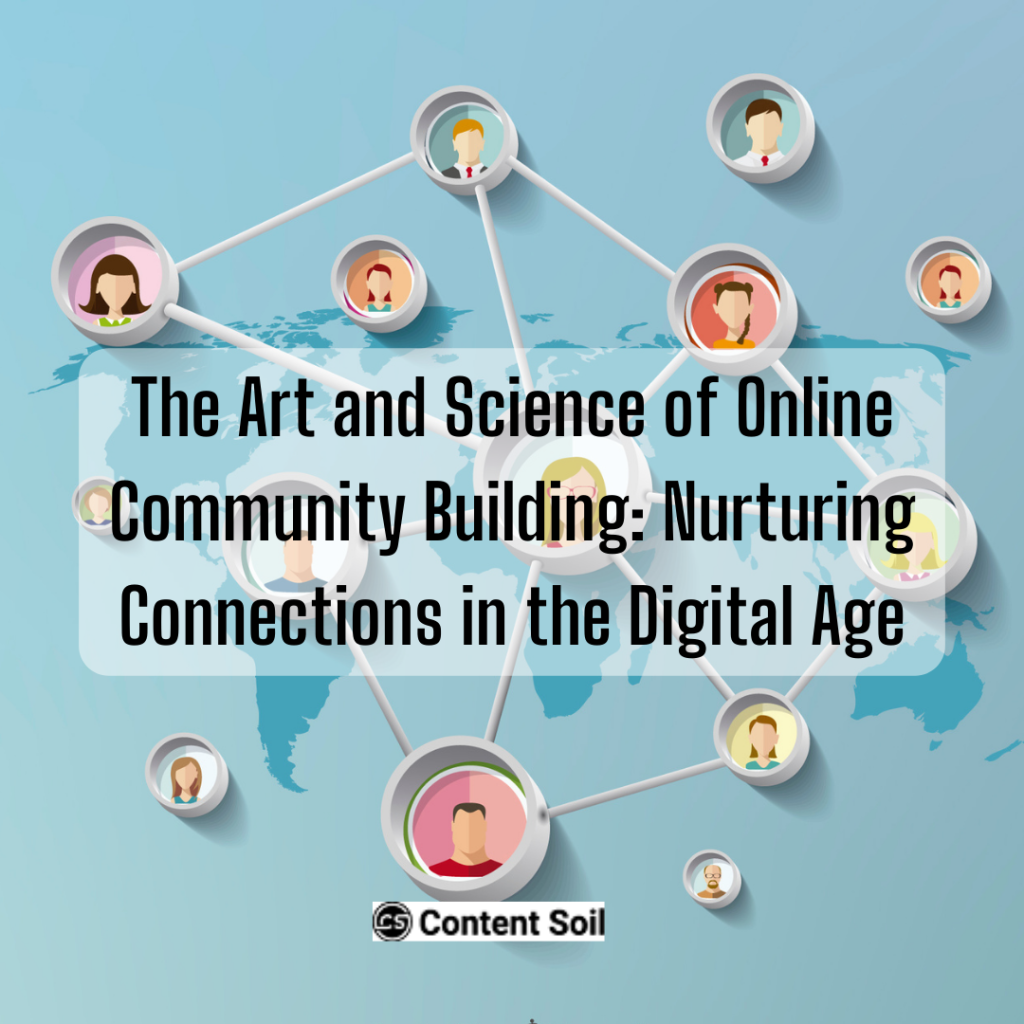Introduction
As the digital landscape has evolved rapidly, online communities have emerged as influential hubs for connecting individuals with shared interests, passions, and goals. From social media platforms and forums to specialized niche groups, the internet provides a vast canvas for fostering communities that transcend geographical boundaries. This article explores the multifaceted aspects of online community building, delving into the strategies, challenges, and significance of creating and sustaining these virtual spaces.
The Essence of Online Communities
Online communities are digital spaces where like-minded individuals converge to share ideas, experiences, and expertise. These communities can range from social networks like Facebook and Twitter to niche forums like Reddit or specialized platforms such as GitHub. The essence of online communities lies in the sense of belonging and shared identity that they offer, providing a space for individuals to connect, collaborate, and engage in meaningful interactions.
Key Components of Successful Online Communities
Clear Purpose and Identity:
Thriving online communities often have a clear purpose and identity. Whether it’s a support group, a hobbyist forum, or a professional network, defining the community’s purpose helps attract the right audience and fosters a sense of belonging.
Engagement and Interaction:
Interaction is the lifeblood of any community. Engaging content, discussions, and activities keep members interested and active. Features such as forums, live chats, and multimedia content contribute to a dynamic and vibrant community experience.
Moderation and Governance:
Effective moderation is crucial for maintaining a positive and inclusive environment. Establishing clear guidelines, addressing conflicts, and ensuring respectful communication are essential components of community governance.
Accessibility and Inclusivity:
A successful online community is accessible and inclusive, welcoming individuals from diverse backgrounds. Design features, language choices, and content representation all play a role in creating an environment where everyone feels valued.
Feedback Mechanisms:
Regular feedback from community members is valuable for improvement. Polls, surveys, and open communication channels help community managers understand the needs and preferences of their audience.
Strategies for Building Online Communities
Identifying Target Audience:
Understanding the target audience is the first step in community building. Recognizing their needs, preferences, and challenges allows community builders to tailor content and features to meet the expectations of potential members.
Leveraging Social Media:
Social media platforms serve as excellent tools for community outreach. Leveraging these platforms to share content, connect with potential members, and promote the community can significantly boost visibility and growth.
Content Strategy:
Compelling and relevant content is the backbone of any community. Establishing a content strategy that aligns with the community’s goals and resonates with its members ensures sustained engagement.
Incentivizing Participation:
Incentives, such as recognition, badges, or exclusive content, motivate members to actively participate. Recognizing and rewarding contributions fosters a sense of accomplishment and reinforces the value of community engagement.
Collaboration and Partnerships:
Building alliances with other communities, influencers, or organizations can expand reach and bring in new perspectives. Collaborative events, cross-promotions, and shared initiatives can enhance the community’s overall value proposition.
Challenges in Online Community Building
Trolling and Toxicity:
Online communities are not immune to negativity. Trolling and toxic behavior can undermine the positive atmosphere of a community. Implementing strong moderation policies and fostering a culture of respect are essential in addressing these challenges.
Member Burnout:
Overwhelming community demands or a lack of fresh content can lead to member burnout. Community managers must balance engagement with members’ well-being and avoid overwhelming them with excessive demands.
Technology and Platform Changes:
The rapid evolution of technology and changes in platform policies can pose challenges. Staying adaptable and proactively addressing any impact on the community’s functionality is crucial for long-term sustainability.
Significance of Online Communities
Knowledge Sharing and Learning:
Online communities serve as knowledge hubs where members can share insights, experiences, and expertise. This collaborative learning environment accelerates individual and collective growth.
Professional Networking:
Many online communities focus on professional networking, connecting individuals within specific industries or fields. These networks provide opportunities for career development, mentorship, and collaboration.
Support Systems:
Support groups, whether for health, personal challenges, or shared interests, offer a crucial sense of community and understanding. Online platforms provide a space for individuals to find support and empathy.
Cultural Exchange and Diversity:
Online communities break down geographical barriers, fostering cultural exchange and celebrating diversity. Members from different parts of the world can connect, share perspectives, and learn from each other.
Conclusion
In the digital era, online community building has become a dynamic and integral aspect of our interconnected world. From the intricacies of crafting a welcoming environment to addressing the challenges of moderation and technology changes, successful community building requires a combination of strategic planning, engagement, and adaptability. As we navigate the complexities of the online landscape, the significance of these virtual communities in fostering connections, knowledge sharing, and support systems cannot be overstated. The art and science of online community building continue to evolve, shaping the way we connect and collaborate in the digital age.


